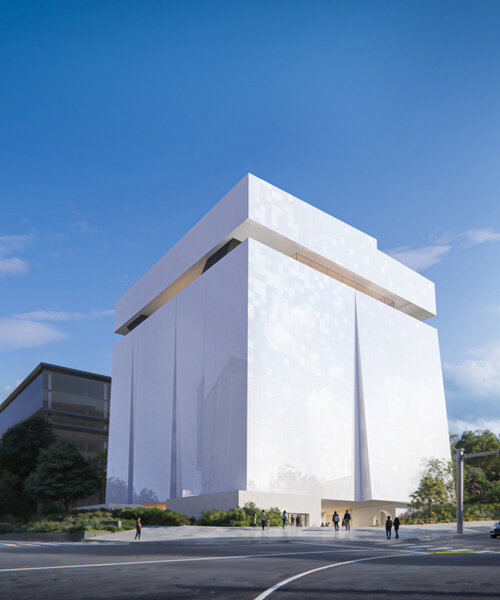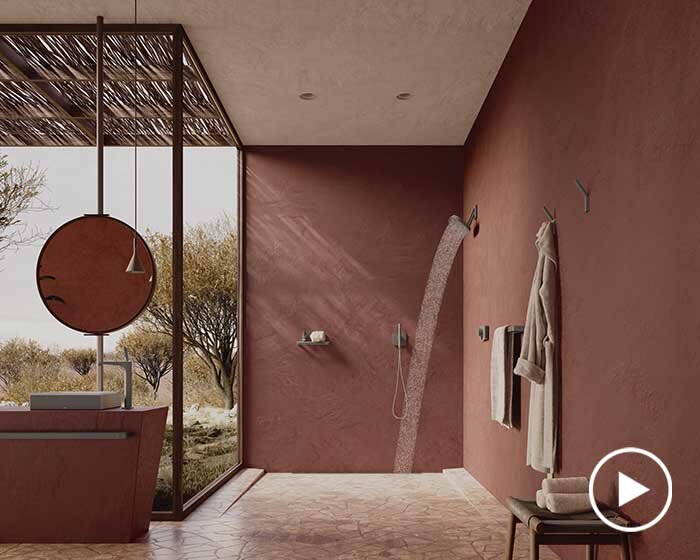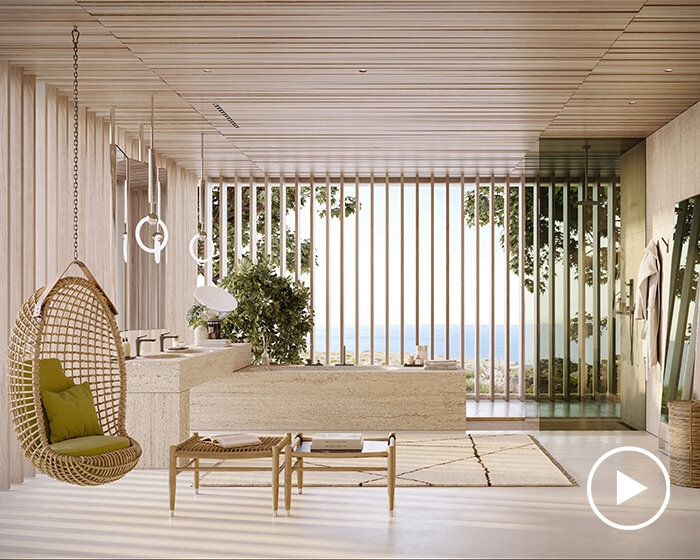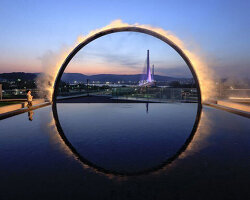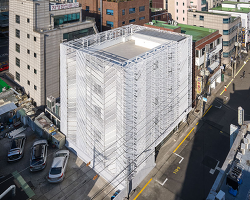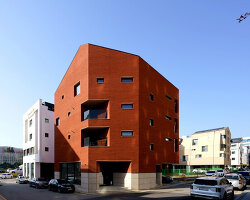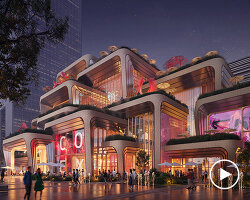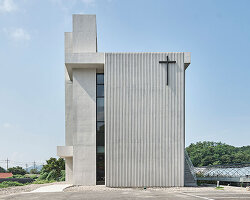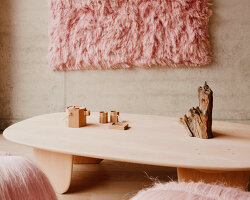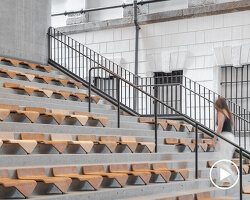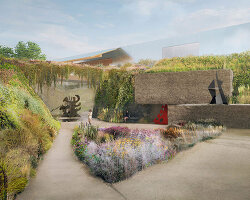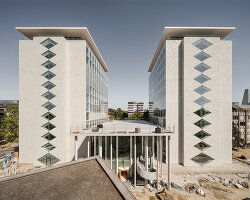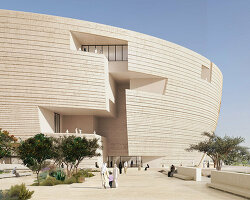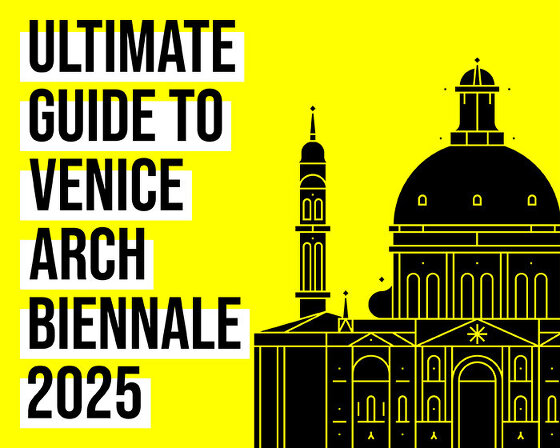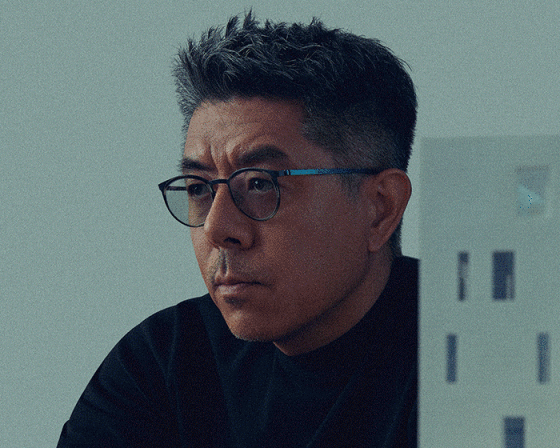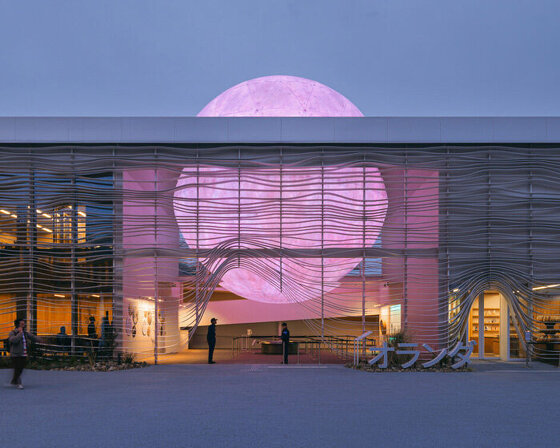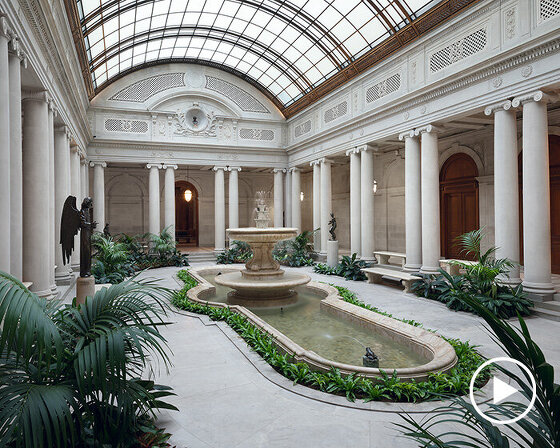Herzog & de Meuron wins the Seoripul Open Storage competition
Herzog & de Meuron was announced by the City of Seoul as the winner of the Seoripul Open Storage competition in Seoul, South Korea. This initiative is envisioned to serve as a collective archive for the Seoul Museum of Art, Seoul Museum of Craft Art, and Seoul Museum of History. The project aims to go beyond a typical storage space, functioning as a dynamic civic area for both local residents and global visitors. Positioned at Seoripul Park’s Eastern Border, the building features a pyramidal glass structure atop mineral blocks, easily visible from Seocho Road. It seeks to expand Seocho-Dong’s identity by incorporating a cultural dimension onto Seoul’s map, blending nature, culture, and urban life. Featuring a surrounding garden, it provides a peaceful outdoor area for visitors and establishes a pathway linking the museum to Seoripul Park. Different functional blocks like the Cafe, Library, Art Delivery, and Art Handling are integrated into the terraced garden, supporting a pyramidal glazed volume designated for the archive, with administration and dining areas strategically placed between the main building volumes.
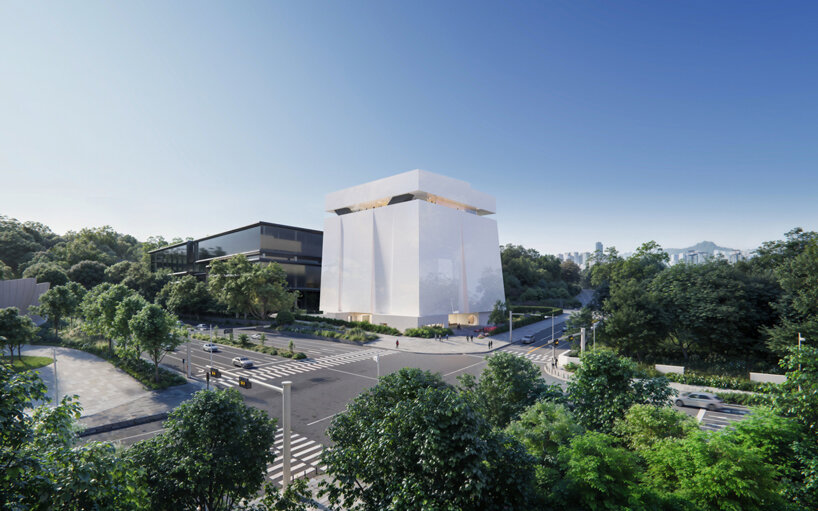
all images Herzog & de Meuron
Traditional Korean Garden Principles in Architectural Design
The architects at Herzog & de Meuron drew inspiration from traditional Korean garden principles, incorporating elements like Forest, Earth, Water, and Diorama into the design of the garden. It harmoniously interacts with the building’s architecture to create a cohesive experience blending indoor and outdoor spaces. Mineral blocks within the garden frame different scenic views, offering varied perspectives to visitors. To realize this vision, the master plan involves significant changes in the existing landscape by excavating the area. This results in a terraced landscape and the newly created building spaces are crafted as mineral volumes. These blocks serve different purposes: the northeastern block houses the lobby, shop, and library near the main entrance; the southeastern one, facing the garden, accommodates a small cafe accessible from both the garden and the street corner. Other functions like elevators, fire escape routes, and special exhibition areas are allocated among these volumes. Vertical circulation routes link the exhibition levels through fire escape staircases and elevators on the south side. Additionally, the stepped auditorium acts as an open connection between levels, seamlessly integrating into the special exhibition program.
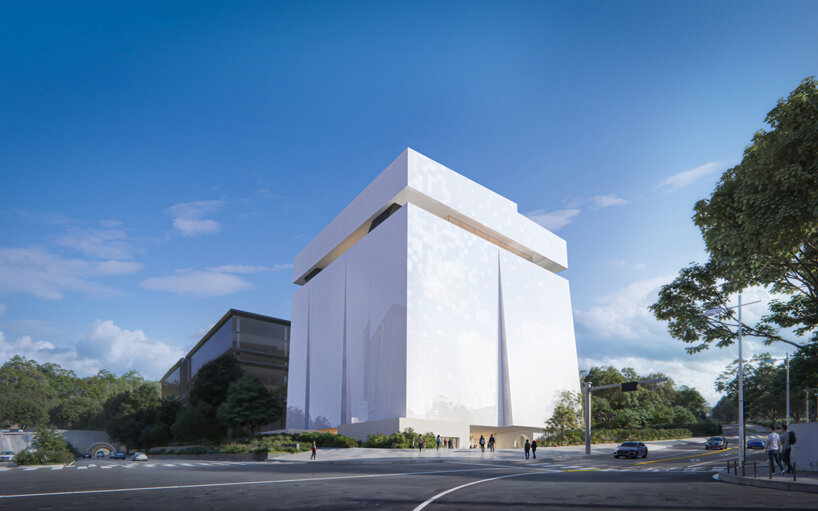
the building emerges as a pyramidal glass structure standing on top of mineral blocks
The Archive Block features a pyramidal base design tailored for specific orientations. The eastern side creates a canopy for the entrance and incorporates window slits offering views of the garden and Myeongdal Road. On the south, a cutout provides light and views of Seocho Road for the staircases. The north side has a central cutout providing views of Seoripul Park and the Gangnam district, while the west side facilitates a view of the Han River. Within the Archive Block (levels 2 to 5), collections are organized by material and required climatic conditions across four stacked zones. Level 2 houses Composite Materials and large-scale art; Level 3 holds Earthenware, Metal Works, Glass & Jade, and Stone works; Level 4 is for Woodworks, Paper works, Calligraphy, and Ivory/Bone works; and Level 5 is dedicated to Textiles, Paintings, and Media Arts. Vertical circulation, visitor access, and technical systems are concentrated on the south side, allowing the rest of the floorplate to remain flexible for evolving curatorial concepts and visitor accessibility.
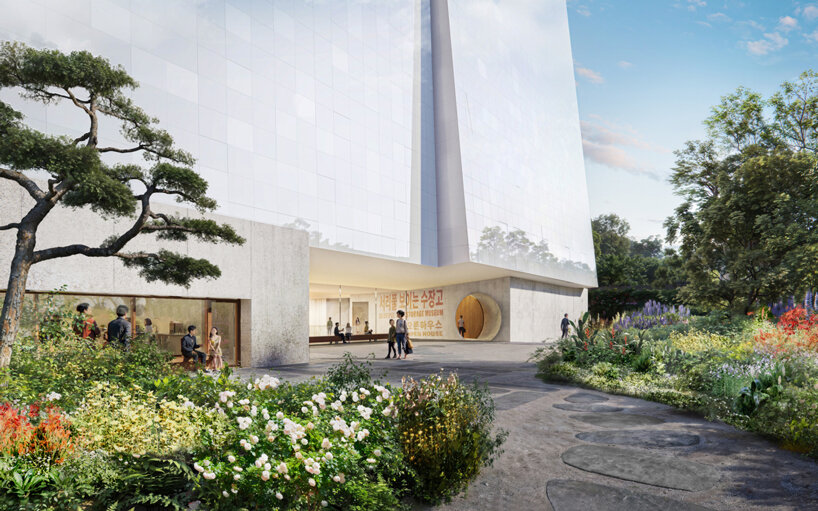
the northeastern volume, next to the main entrance, accommodates the lobby, shop, and library
A cone-shaped void within the archive allows visual connections between the ground floor and archival levels. This glazed cone features display cases showcasing key artifacts from the exhibition/archive. On the sixth level, the pyramidal glass block is divided to provide panoramic views for administration and the restaurant. The archive offices split into west and east wings, with a public restaurant in between. An atrium offers views from the restaurant to the art conservation level, revealing typically hidden programs in archive buildings. The glazing is set back, creating an outward terrace whose width varies based on function. Meanwhile, the 7th-floor block extends the pyramidal volume’s geometry and houses the conservation program. While conservation blocks are at the perimeter, the central area remains an open collective workspace. Shed windows and continuous bands of windows illuminate these working areas.
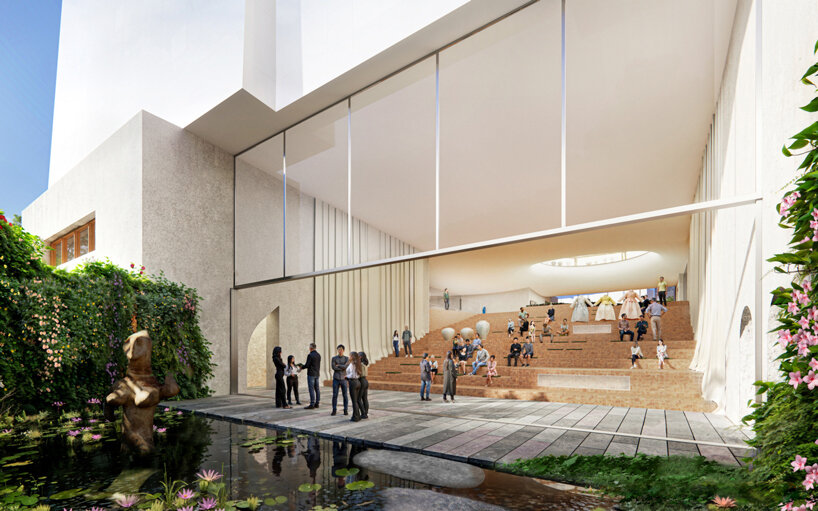
The project’s sustainability goals focus on achieving carbon neutrality within a 50-year lifespan. Strategies include reducing concrete use and incorporating high-recycled content, employing passive techniques like limited window openings and effective insulation to minimize energy consumption, utilizing geothermal heat pumps for low-carbon heating and cooling sourced from local renewable energy, installing photovoltaic elements on the roof and facades to generate electricity for the building’s use, and collecting rainwater for non-potable purposes to decrease reliance on fresh water. Accounting for the building’s lifespan, the emissions avoided through integrated photovoltaics exceed those produced during construction and operation, ultimately resulting in carbon neutrality.
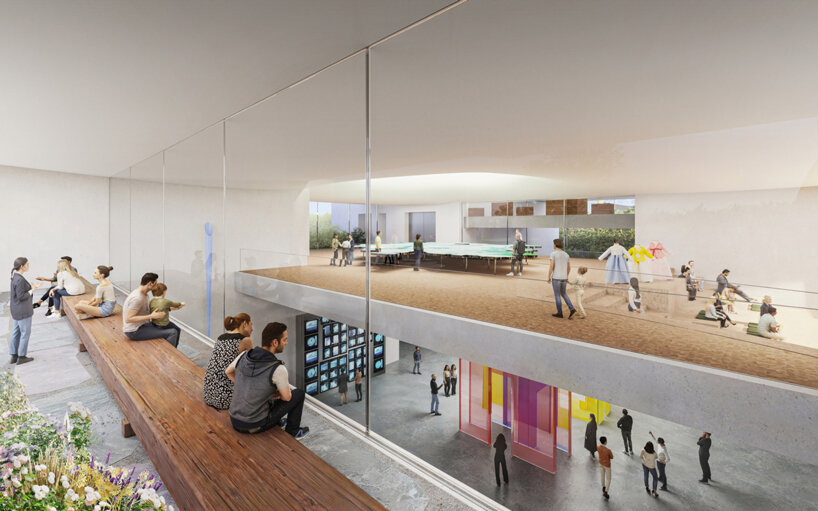
the special exhibition program is positioned between the volumes on the ground floor and basement level one
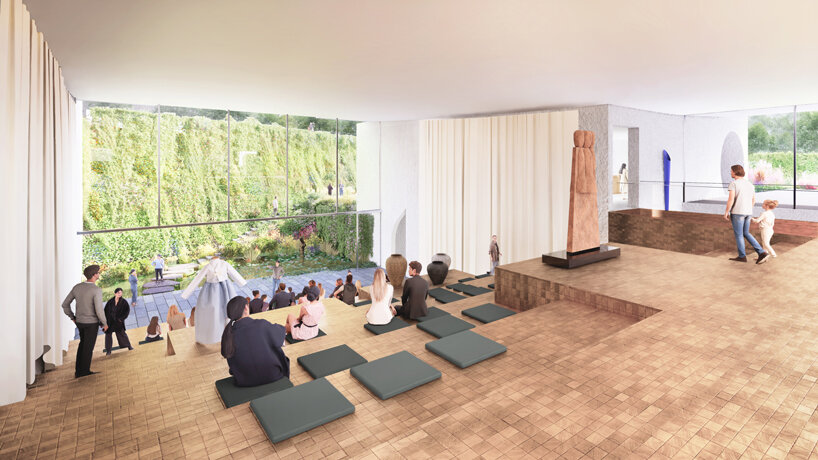
the stepped auditorium allows for its seamless integration into the special exhibition program
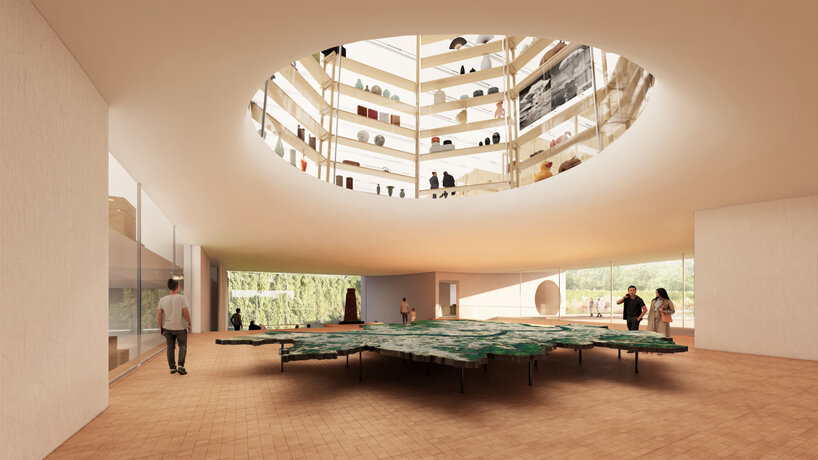
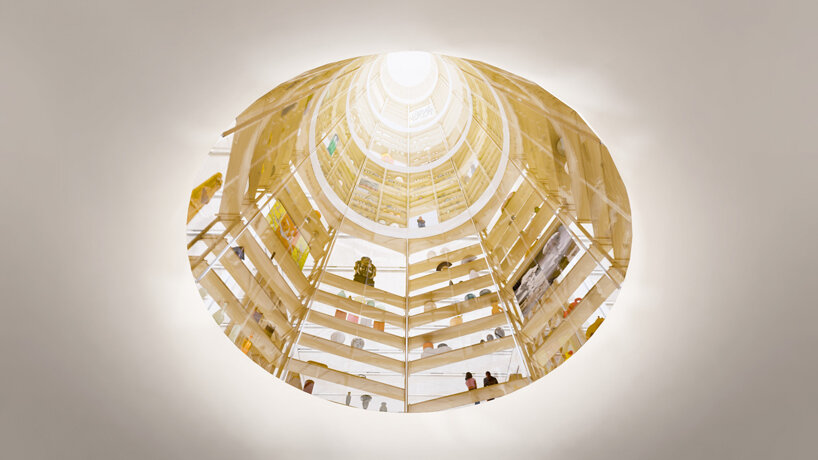 void view from lobby
void view from lobby
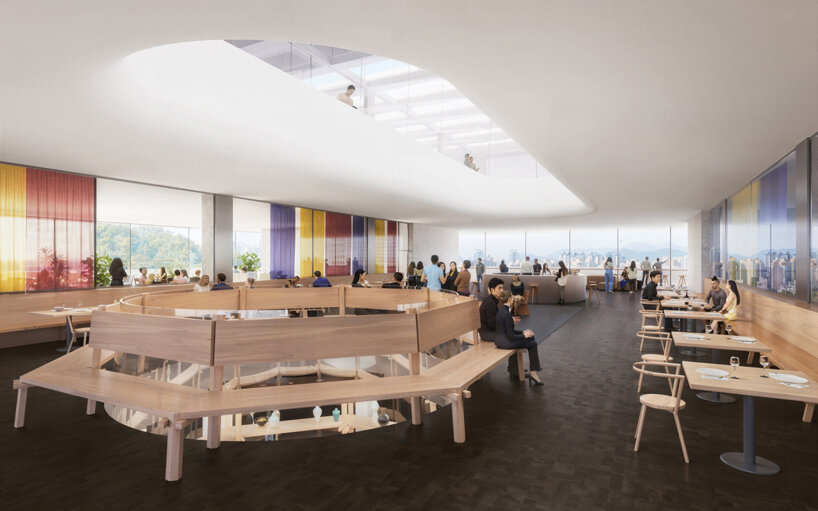
a small cafe opens to both the garden and the street corner 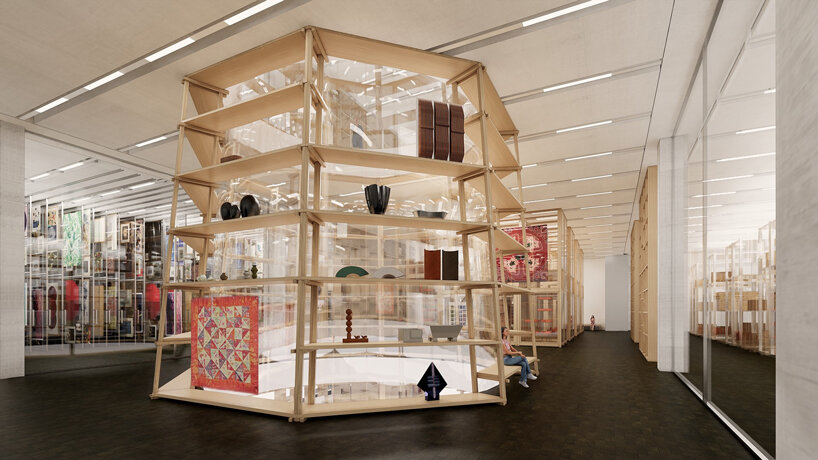
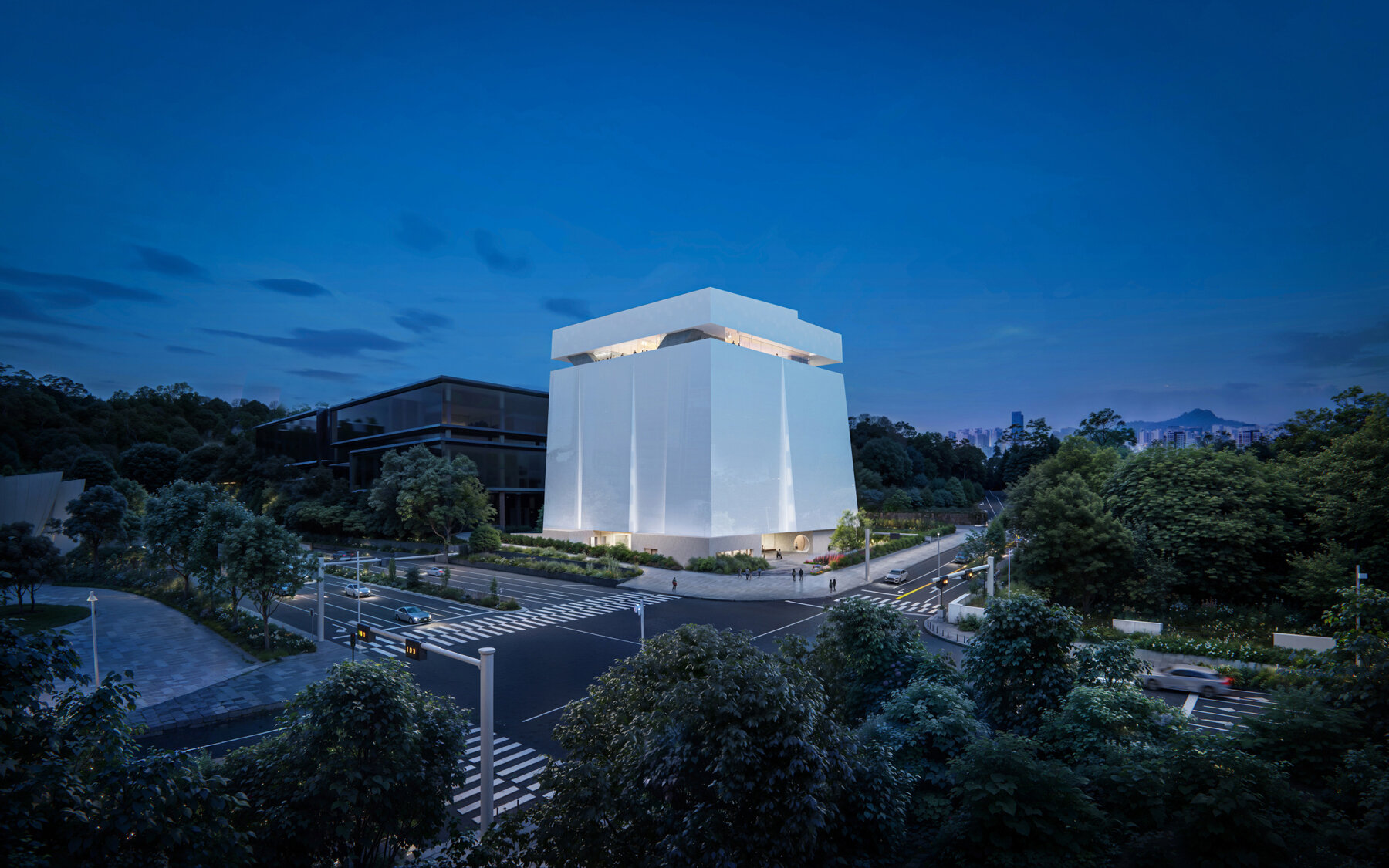







project info:
name: Seoripul Open Art Storage
architects: Herzog de Meuron | @herzogdemeuron
partners: Jacques HerzogPierre de MeuronSantiago Espitia Berndt (Partner in Charge)Martin Knüsel
project team: Enrique Peláez (Project Director), Thorben Bazlen (Project Architect), Inmo Kang, Jackie Bae, Benedict Choquard, João Conceição, Sukjoo HongInmo, Kang Jeremy, Kim Liane, Liang Jan, Macbean Chris, Noh Aida, Ramirez Marrujo, André Vergueiro
design consultant: Herzog & de Meuron Global Ltd, Switzerland, Basel
landscape design: Vogt Landschaftsarchitekten AG, Zürich, Switzerland
structural engineering: Schnetzer Puskas Ingenieure AG, Basel, Switzerland
sustainability engineering: Transsolar Energietechnik GmbH, Stuttgart, Germany
museum advisory: Peter Wilson
curatorial advisory: Laurencina Farrant
location: Seoul, South Korea
site area: 62,430 sqft, 5,800 sqm
gross floor area (GFA): 209,896 sqft, 19,500 sqm
